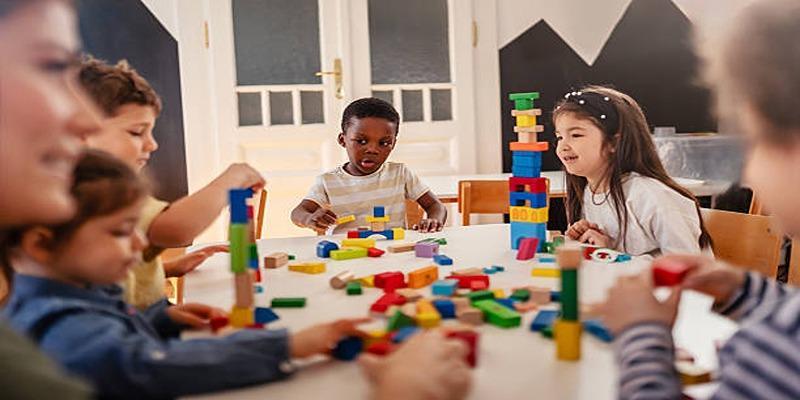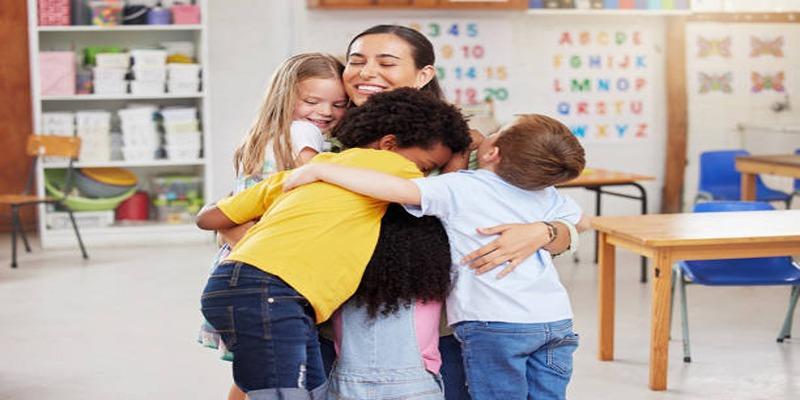All parents have witnessed their child experience big feelings- tantrums, peer pressure or disappointment. They are learning moments by using social emotional learning (SEL). SEL provides young people fundamental life skills to build healthier academics, relationships and conduct. As you interest your child in growing SELs, you also ensure that the child has a head-start in living a successful life, as he/she meets challenges and opportunities in the years ahead.

Social emotional learning is the undertaking whereby, children learn and practice the knowledge, attitudes, and skills, which they should have to be socially and emotionally competent.
SEL has five key competencies that are physically interconnected to become emotionally intelligent and resilient children:
Self-awareness entails being aware and cognizant of personal feelings, thoughts and values. This includes ability to recognize strengths and weaknesses as well as self confidence and self efficacy. With self-awareness, children realize more of their needs, and how they feel during various situations.
Self-management is the practice in managing emotions, thoughts, and behaviours of oneself in various situations. This involves goal setting, stress management, self motivation and self control. By teaching children how to control their emotions and behaviors, they are able to make positive decisions that would deliver desirable results.
Social awareness is linked to perception and understanding of others, and the ability to empathize and determine, and deal with norms and cues in life. This is the ability that helps children to have healthy relationships and to collaborate with others.
To foster social awareness, children should be taught about other people, their opinions and points of views, cultures, and their experiences. They can also gain the experience of active listening and empathizing with others.
Relationship skills These are the skills that refer to communication skills, cooperating with people, resolving conflict in a peaceful manner, and creating positive relations. Such skills are necessary in ensuring healthy friendships, family relationships and in future, employment relationships.
Some of the ways that children can be taught relationship skills include modeling after adults present in their lives, a repetitive practice of good communication styles, and group activities. The ability to advance relationship skills can also assist children in becoming more aware of emotions and balancing it during diverse social situations.
Problem solving is one of the most important things that children need to learn during their way in life. These competencies enable a child to think critically, creatively and come out with solutions to the challenges that he/she may encounter.
One of the ways in which creative problem solving can be imbibed among children is by letting them try out new things, and making their choices. This could include brain games, puzzles, and even day-to-day activities such as which game to play with friends or how to balance time to complete his/her homework.
Years of research have proven that social and emotional learning can bear positive, measurable results in the development of the children. A detailed review of 213 SEL programs that studied more than 270,000 students showed increase across a wide range of areas.
Students who took part in SEL programs achieved an 11 point per centile gain in academic performance as opposed to their counterparts. This is made possible by a child showing better concentration, classroom conduct, and motivational inclination to learn.
The emotional advantages are quite convincing as well SEL students have better emotional self-control, diminished anxiety levels, and a more substantial ability to recover when hit by challenges. They create more effective coping skills and feel more confident about their skills.
Research indicates that parents are the most important figures in the development of the social and emotional competencies of children. Your actions can have a great role in making your child develop their SEL; therefore, small and regular requirements are important.
Teach your child to develop a vocabulary to describe emotions by labeling feelings as they experience. Instead of telling your child not to be angry, use words like, I can understand why you are so angry that your tower collapsed. This confirms their experience when they teach emotional identification
We read books together and examine different emotions, how various characters react to different situations. Questions such as how do you think the character felt can be asked. What are your opinions in that case?
Include breathwork, meditation. Deep breathing, 10 second countdown, or time-out can help the child to calm his/her feelings before they can accumulate and cause overwhelming feelings.
Make one feel secure and comfortable because of the repetitive actions and routines. When children know in advance what will occur, they cope better with change and going through a period where their expectations are not fulfilled.
Practice empathy in your day to day interactions. Point out how your behavior can and does impact others and teach your child to think in the ways of others. When we assisted our neighbor to carry grocery, it made her smile. How do you suppose that made her feel?"
Engage in active listening especially where you give your child your total attention when he or she is speaking Repeat questions and reflect back on what you hear to make them see that you understand their point of view.
When they start conflicts, lead your child through solution-seeking actions instead of giving solutions to the problems. Ask,Question marks,What?. What are some solutions that required?" What will happen in case you do so?
Teach your child to ponder about possible consequences before the decisions are made. Encourage them to think over how their decisions can impact on themselves and others.

Schools also are more cognizant of the importance of SEL and work to transpose these skills into academic time. Integrated programs are more effective when social and emotional learning are tied to the school environment rather than a special subject, rather like math or English.
Morning meetings can be used to develop classroom community in the stage of sharing feelings and acquiring skills to communicate. Teachers also support their students in discussions that enable them to cope with feelings and to embark on problem solving mechanisms.
With peer mediation programs, students learn to perform mediation duties in order to resolve conflicts in a constructive way. These projects impart very useful skills in negotiation and consequently diminish the disciplinary cases and enhance climate in schools.
Certain parents fear that social and emotional learning at the expense of academics consume time. The studies are always the same, students who have strong SEL skills also perform academic tasks better since they are capable of focusing on tasks, enduring obstacles and cooperating with other students effectively.
Some felt anxious about talking about emotions especially when they have been brought up in a family where feelings were not openly discussed. It is important to keep in mind that you do not have to be a flawless model of how to teach emotional skills. Children can learn to express and regulate emotional control through observing it in the adults.
Social and emotional learning (SEL) is achieved progressively over time and based on patience, practice and strong relationships. Model healthy emotional control because kids will imitate. Provide them safety in order to practice SEL in group activities and in leadership roles. Take failure as a school lesson in resilience. Work together with the school that your child attends to ensure that there is consistency in the skills that he/she is taught at school and what they are supposed to learn at home.
 TOP
TOP
If you still believe that women don’t get heart diseases or that only older people can have heart diseases, you are wrong
 TOP
TOP
How building wealth is possible at any age with practical strategies that focus on consistent habits, smart choices, and long-term thinking
 TOP
TOP
Start making the most of your 401(k) today and secure a stronger financial future. Learn how timing, employer matches, and smart contributions can improve your retirement
 TOP
TOP
How financial aid for college works—from grants and scholarships to loans and work-study programs. Get clear, practical guidance for every funding option
 TOP
TOP
Discover 5 unique horse races that take place around the world, blending speed, thrill, and stunning cultural locations.
 TOP
TOP
Discover how Easter is celebrated across countries, from egg rolling to water fights, offering joy through local traditions.
 TOP
TOP
Explore North Wales’ most breathtaking gardens, from serene floral paths to hillside greenery with sea views.
 TOP
TOP
Wondering if it’s the right time for a loan? Learn how rates, timing, and your finances impact the decision.
 TOP
TOP
Discover the top reasons to pay credit card bills on time and how it safeguards your credit, money, and peace of mind.
 TOP
TOP
Uncover the best experiences in Rome, Italy, with this essential guide. Walk through ancient ruins, explore piazzas, visit historic churches, and get to know the Eternal City at your own pace
 TOP
TOP
Discover the best places to stay in Nashville, from lively downtown hotels to charming neighborhood rentals. Explore top areas suited for music lovers, families, and anyone seeking the perfect Nashville experience
 TOP
TOP
Thinking about a lease buyout? Learn how to evaluate your options, compare costs, and decide whether keeping your vehicle is the right move. Understand the financial side before making your next step